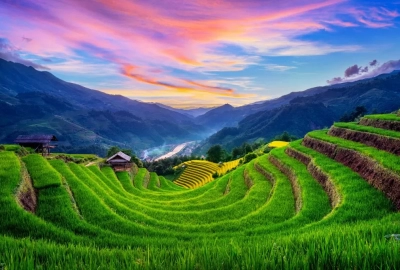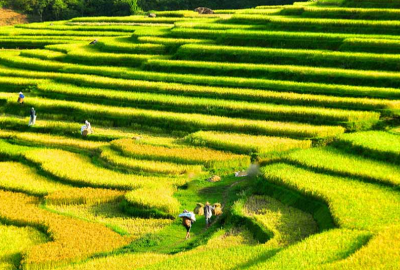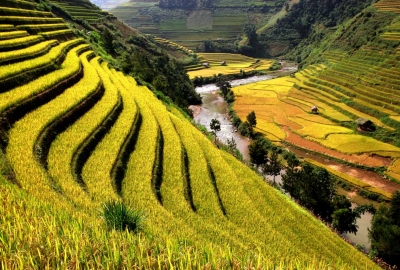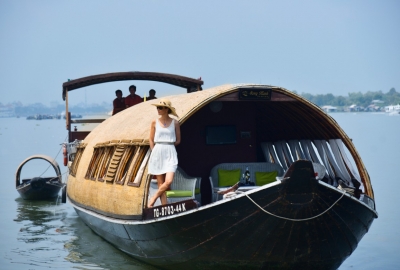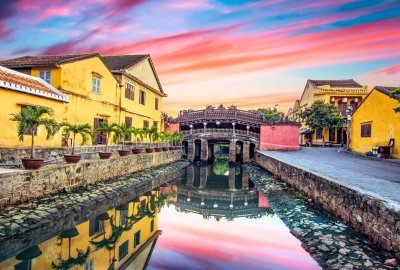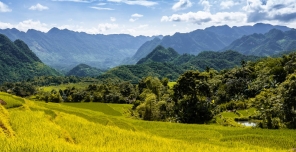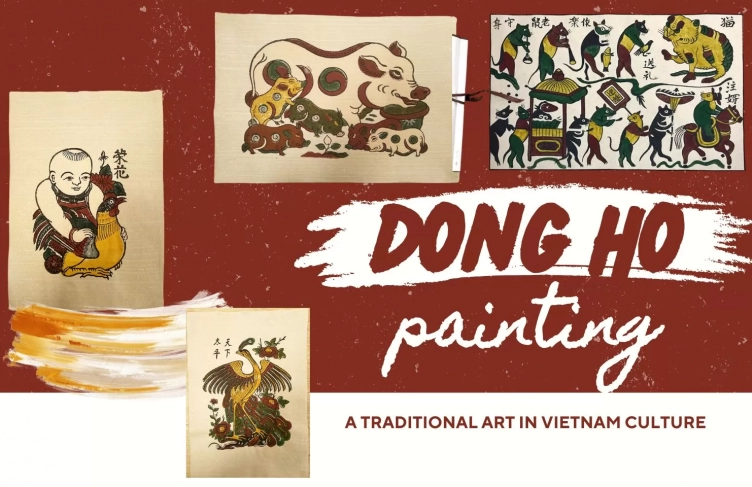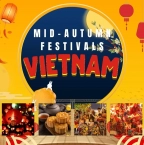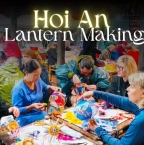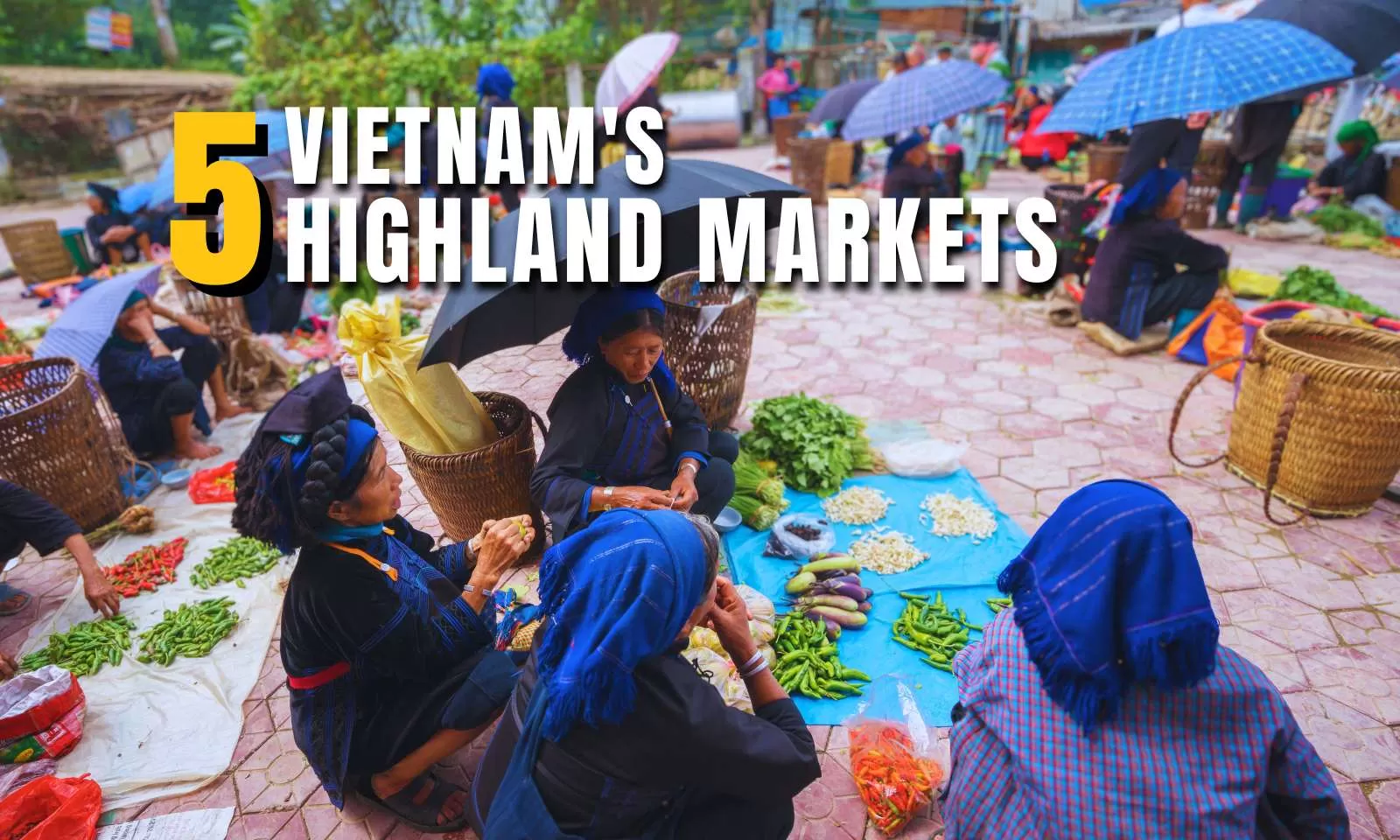
Top 5 Vietnam's highland markets: A journey through local culture

Vietnam’s highland markets are a window into the country’s rich cultural heritage, where tradition and commerce come together in a lively atmosphere. Each market offers a unique experience, making them a must-visit for travelers seeking a deeper connection to Vietnamese culture. Let Hanoi Voyages explores the charm and significance of Vietnam's highland markets!
Table of Contents
Visit top 5 Vietnam's highland markets: A cultural adventure in every step
Each market has its own beauty and unique cultural color. Here are the top 5 famous highland markets in Vietnam that you should not miss.
Bac Ha Market (Lao Cai)
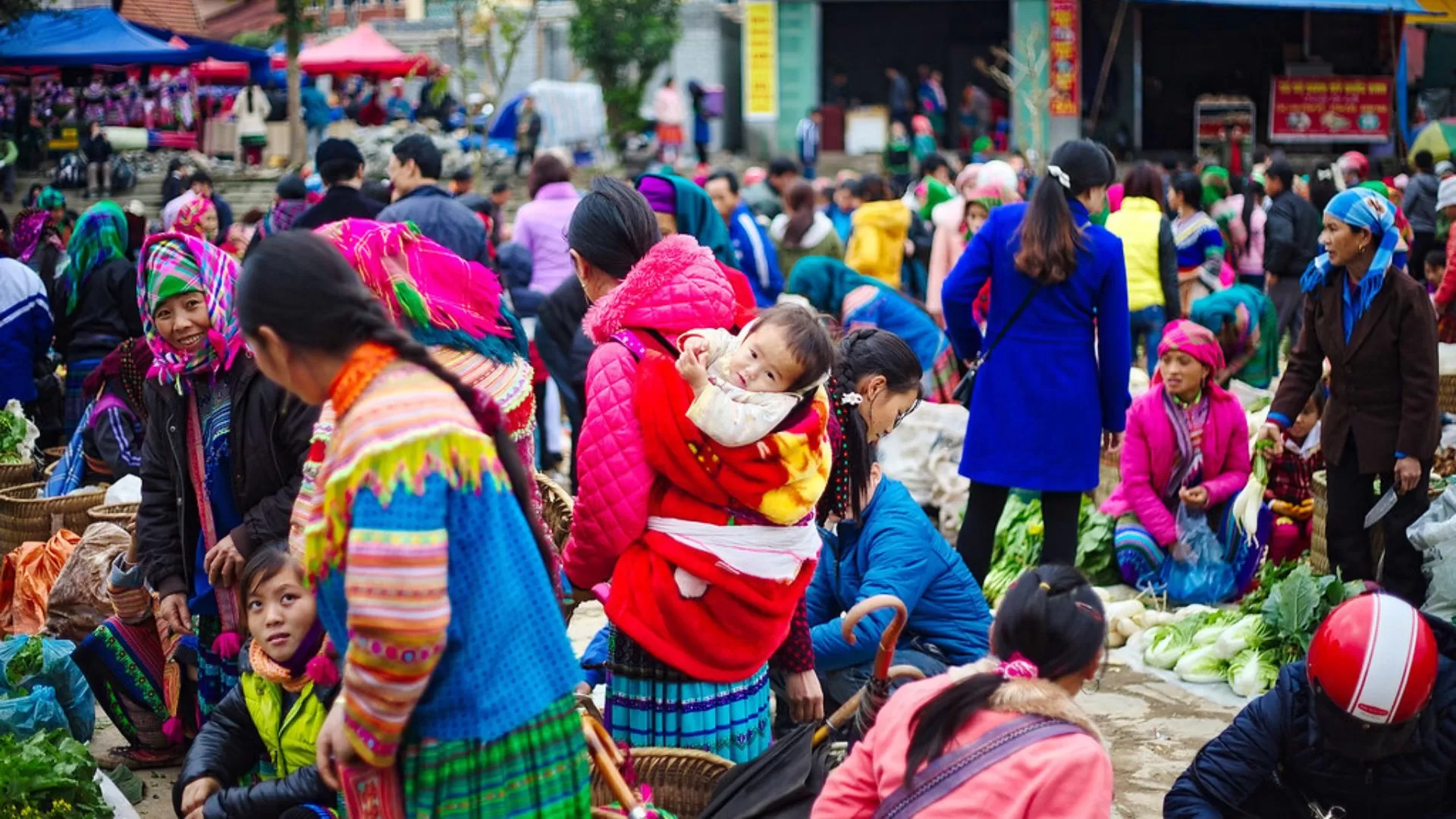
- Location: Bac Ha District, Lao Cai Province
- Market Day: Every Sunday
Bac Ha Market is one of the largest and most lively Vietnam's highland markets in the northern region. Located about 135 km from Sapa, it attracts people from various ethnic groups, including the H’Mong, Tay, and Dao. These people travel long distances from their mountain villages to trade goods and socialize. The market is famous for its lively atmosphere, colorful traditional clothing, and diverse range of local products.
As you step into Bac Ha Market, you will be greeted by a mesmerizing sight: women in bright, intricately embroidered skirts, men carrying baskets of produce, and traders enthusiastically bargaining over livestock. The market is divided into sections, each offering a different experience.
The handicraft area is filled with beautifully woven textiles, handmade silver jewelry, and unique souvenirs. In the livestock section, farmers buy and sell buffalo, pigs, and even horses - an essential part of life for people in the highlands. Meanwhile, the food stalls serve traditional delicacies such as Thắng Cố, a distinctive H’Mong dish made from horse meat, and corn wine, a strong, locally brewed alcohol.
Visiting Bac Ha Market is not just about shopping; it’s about witnessing the cultural heritage of Vietnam’s ethnic minorities. It is one of the most well-preserved ethnic markets in Vietnam, where you can experience authentic highland traditions. To get the best experience, arrive early in the morning (around 7:00 AM) when the market is most active and dynamic.
Dong Van Market (Ha Giang)
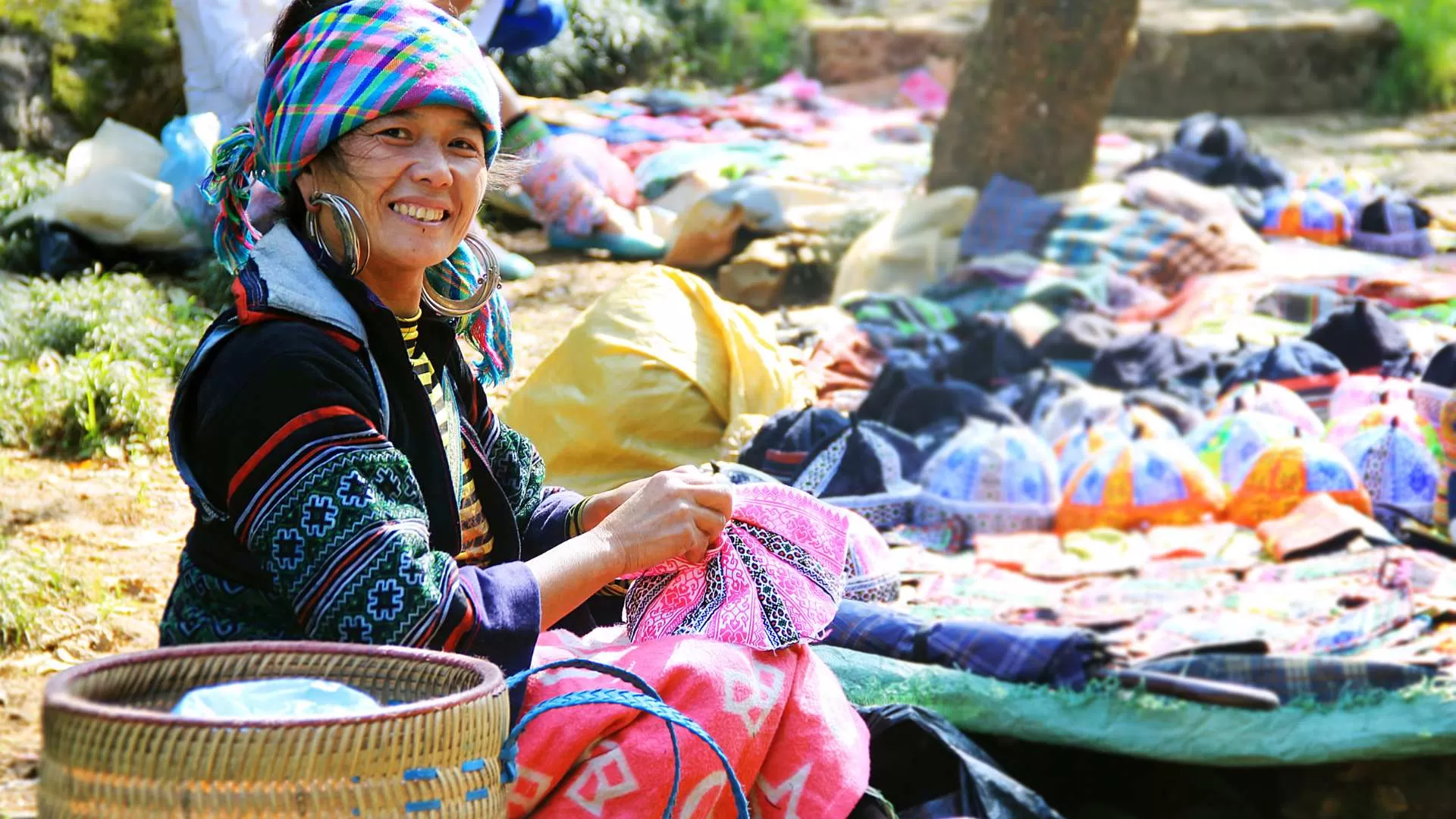
- Location: Dong Van Town, Ha Giang Province
- Market Day: Every Sunday
Dong Van Market is one of the most important trading hubs for ethnic groups in the far north of Vietnam. Every Sunday, the usually quiet town transforms into a bustling center of activity, as people from the surrounding villages gather to buy and sell goods.
One of the most striking aspects of Dong Van Market is the diverse mix of ethnic groups, including the H'Mong, Tay, Dao, and Nung, each wearing their traditional clothing. The market offers everything from fresh produce, meats, and handmade crafts to household items and farming tools. For food lovers, Dong Van Market is a great place to try local specialties such as mèn mén (steamed corn flour) and bánh tam giác mạch - a unique buckwheat cake made from a grain native to the region.
Each month, the Dong Van Market will have a special day in the middle of the month when visitors can enjoy unique cultural programs. As one of the most lively ethnic markets in Vietnam, the people of Dong Van district organize various traditional folk games from the Northeast, such as bird fighting and brocade weaving displays. During this time, visitors can immerse themselves in the lively, festive atmosphere, participate in exciting activities, and gain a deeper understanding of the culture of Dong Van and the Northeast region.
Ta Sin Thang Market (Dien Bien)
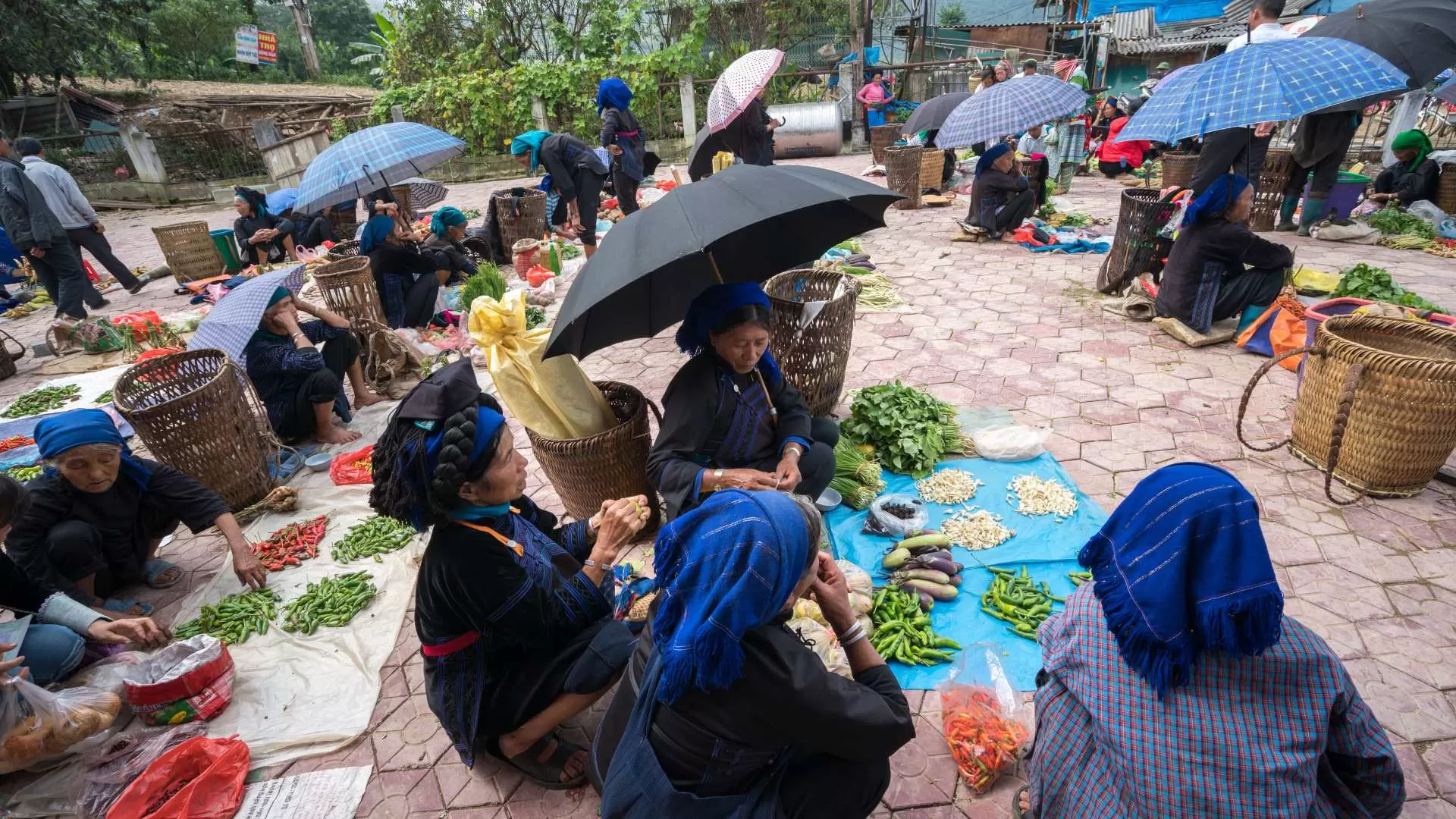
- Location: Ta Sin Thang commune, Tua Chua district, Dien Bien province
- Market Day: Every six days
Ta Sin Thang Market is one of the most fascinating Vietnam's highland markets. Situated 37 km from Tua Chua Town, this traditional market has existed for decades and remains an essential part of the local ethnic communities. Unlike weekly markets, Ta Sin Thang operates every six days, following the Ngo (Horse) and Ty (Rat) days in the ancient lunar calendar. The market starts at 5:00 - 6:00 AM and lasts until 2:00 - 3:00 PM, offering a lively glimpse into highland culture amidst towering cliffs, misty valleys, and floating white clouds that create a breathtaking landscape.
Ta Sin Thang is a social hub where people exchange stories, share farming techniques, and enjoy traditional music and dance performances. As the sun rises, groups of ethnic people make their way through misty mountain paths, bringing along baskets of fresh produce, livestock, and handmade crafts. The market is filled with local specialties such as sticky rice, fresh vegetables, handmade textiles, and farming tools. A highlight for visitors is Mông Pê corn wine, a unique highland spirit brewed with forest leaves, known for its rich aroma and strong flavor.
Ta Sin Thang Market is a destination that deeply embodies the cultural essence of the Northwest highlands, with a long history and unique traditional values. Combined with the majestic mountainous landscape of the Tua Chua rocky plateau, this market stands out as a remarkable highlight in the tourism map and exploration journeys of the highland region in Tua Chua.
Hanoi Voyages offers Vietnam tours for the best experience |
Hanoi Voyages proudly offers exciting and captivating tours to Vietnam:
If you want to explore Vietnam's highland markets on your private tour, Hanoi Voyages also offers tailor-made itineraries to create the perfect trip for you. Contact us now! |
Meo Vac Market (Ha Giang)
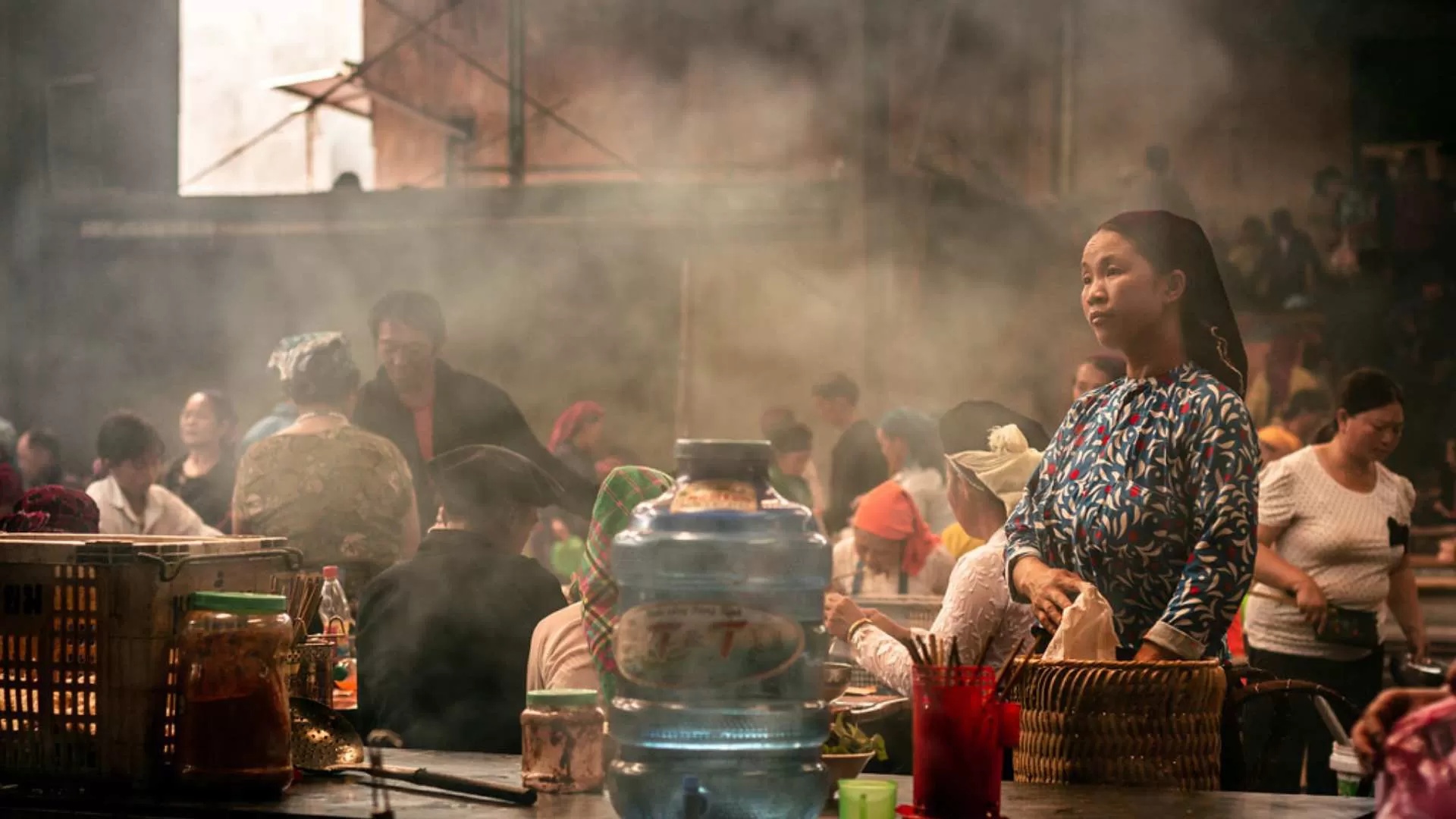
- Location: Meo Vac town, Meo Vac district, Ha Giang province
- Market Day: Every Sunday
Nestled in the heart of Meo Vac town, Meo Vac Market is the largest and most lively market in Ha Giang province. Taking place only once a week on Sunday mornings, it is a unique gathering place for locals from surrounding villages. The market is a colorful spectacle, with highland women dressed in their finest brocade attire, adding to the vibrant atmosphere. Meanwhile, men gather in small groups, sharing stories over local tobacco pipes, contributing to the bustling and communal spirit of the market.
The busiest part of the market is the entrance, where livestock and poultry are actively traded alongside farming tools, fresh produce, and local snacks such as fried cakes and grilled corn cakes. In addition to traditional goods, electronic stalls have recently emerged to cater to the increasing needs of the local community. Most of the products found here, from handmade brocade fabrics to medicinal herbs and spices, are locally produced, showcasing the craftsmanship and agricultural skills of the highland people.
At the heart of the market is a two-story food court, the most popular spot for visitors. The first floor is dedicated to food stalls serving Ha Giang delicacies like thắng cố, phở Tráng Kìm, bánh tam giác mạch, mèn mén, and cháo ấu tẩu. The second floor is a haven for women, featuring clothing stalls offering a variety of colorful, intricately embroidered traditional outfits from the H’Mong, Dao, and Lô Lô ethnic groups, along with jewelry and accessories.
More than just a place for trade, Meo Vac Market is a cultural tradition deeply rooted in the lives of the people of Ha Giang - a space where locals reconnect with old friends, form new relationships, and where young men and women may even find their future life partners.
Sapa Love Market
- Location: Sapa Square
- Market Day: Every Saturday
Sapa Love Market is a unique cultural tradition within Vietnam's highland markets, held every Saturday evening in Sapa Square. This is not only a place for trade but also an opportunity for young men and women to meet, get to know each other, and express their feelings through traditional khèn melodies and love songs.
Popular items at the market include hand-woven brocade, silver jewelry, herbal medicine, honey, and traditional handicrafts. Each product reflects the rich cultural identity of the ethnic minorities, from the intricate patterns of brocade fabrics to jewelry with deep spiritual significance.
The atmosphere of the love market becomes exciting with artistic performances such as the H’Mong khèn dance, Dao Đỏ folk singing, and various traditional games. Although the love market today has become more tourist-oriented, it still retains some of its original charm, with colorful ethnic attire and preserved cultural customs.
To fully experience the event, visitors should come on Saturday evening, when the market is at its liveliest. Don’t forget to bring warm clothing, as Sapa's nighttime weather can be quite cold. Visiting the Sapa Love Market is not only a chance to explore local culture but also to appreciate the simple yet profound beauty of love in the highlands.
Tips for exploring Vietnam's highland markets: What you need to know
To have beautiful and memorable memories when visiting Vietnam's highland markets, you should pay attention to the following:
Avoid bargaining or haggling unnecessarily
Unlike in many tourist markets where bargaining is expected, some weekly markets, especially those in ethnic minority regions, consider price negotiations impolite. Vendors set fair prices based on traditional trade customs, so excessive haggling may be seen as disrespectful.
Do not whistle in the market
Whistling is often associated with summoning spirits in some ethnic traditions, and in certain areas, it is considered impolite or even taboo. To show respect, refrain from whistling while walking through the market.
Be respectful towards local women
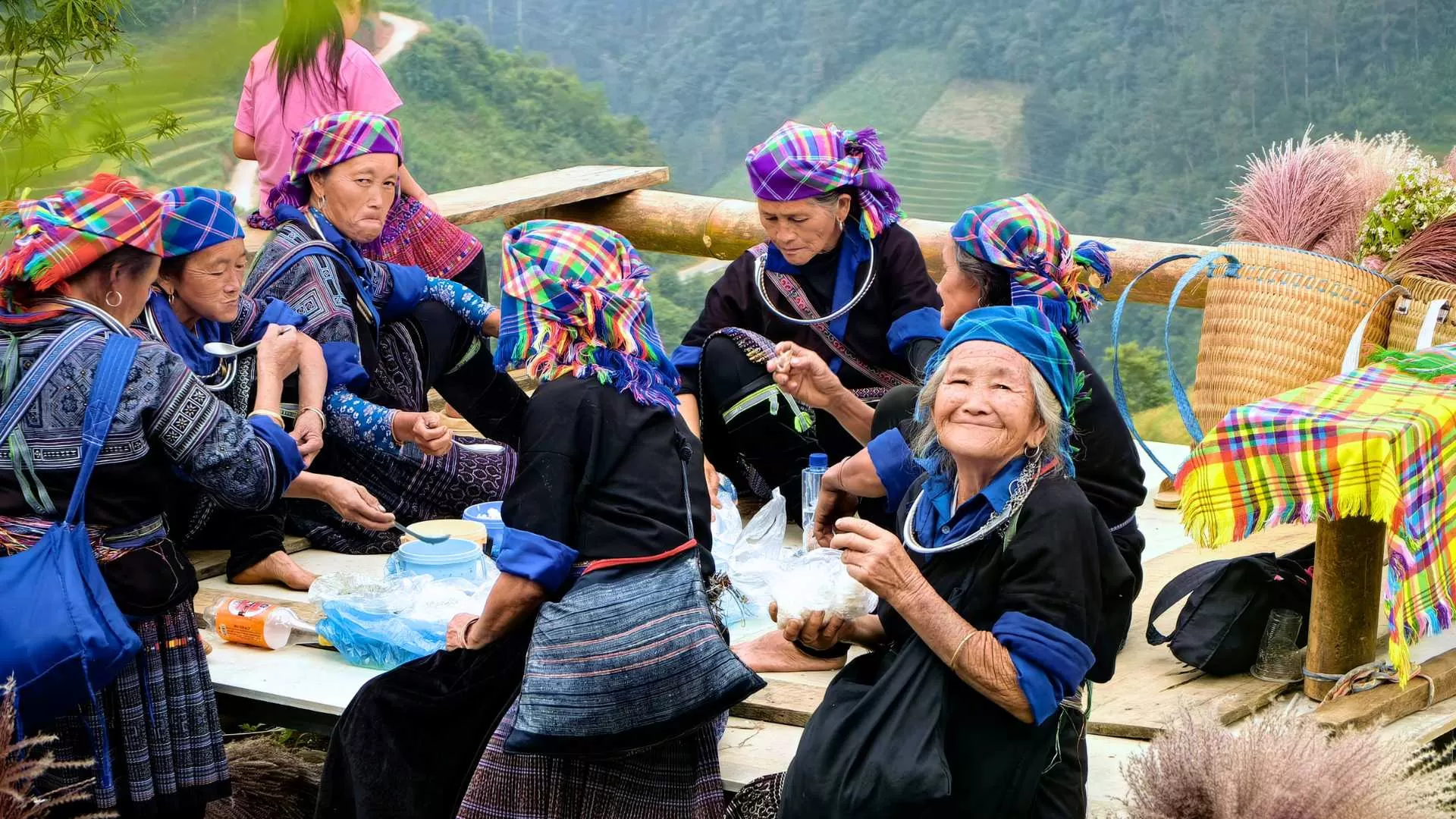
In some rural communities, interactions between men and women follow traditional customs. Avoid teasing or joking with local girls, as it may be misinterpreted and cause discomfort. Respecting local social norms ensures a positive experience for both visitors and residents.
Carry only essential cash to prevent theft
While most weekly markets are safe, pickpocketing can occur in crowded areas. Avoid carrying large amounts of cash, and keep your belongings secure.
Respect local culture
Remember to respect the customs and traditions of the local people. Avoid taking photos of them without permission and always maintain a polite and respectful attitude in your interactions. Additionally, be mindful not to litter indiscriminately to help preserve the area's natural environment.
Vietnam's highland markets offer a unique glimpse into the country's rich culture and traditions. Let Hanoi Voyages guide you on this cultural journey. Contact us today to start your adventure!
Dream about your trip to Asia, in private
We are here to make it happen with youFREE QUOTE, WITHOUT OBLIGATION

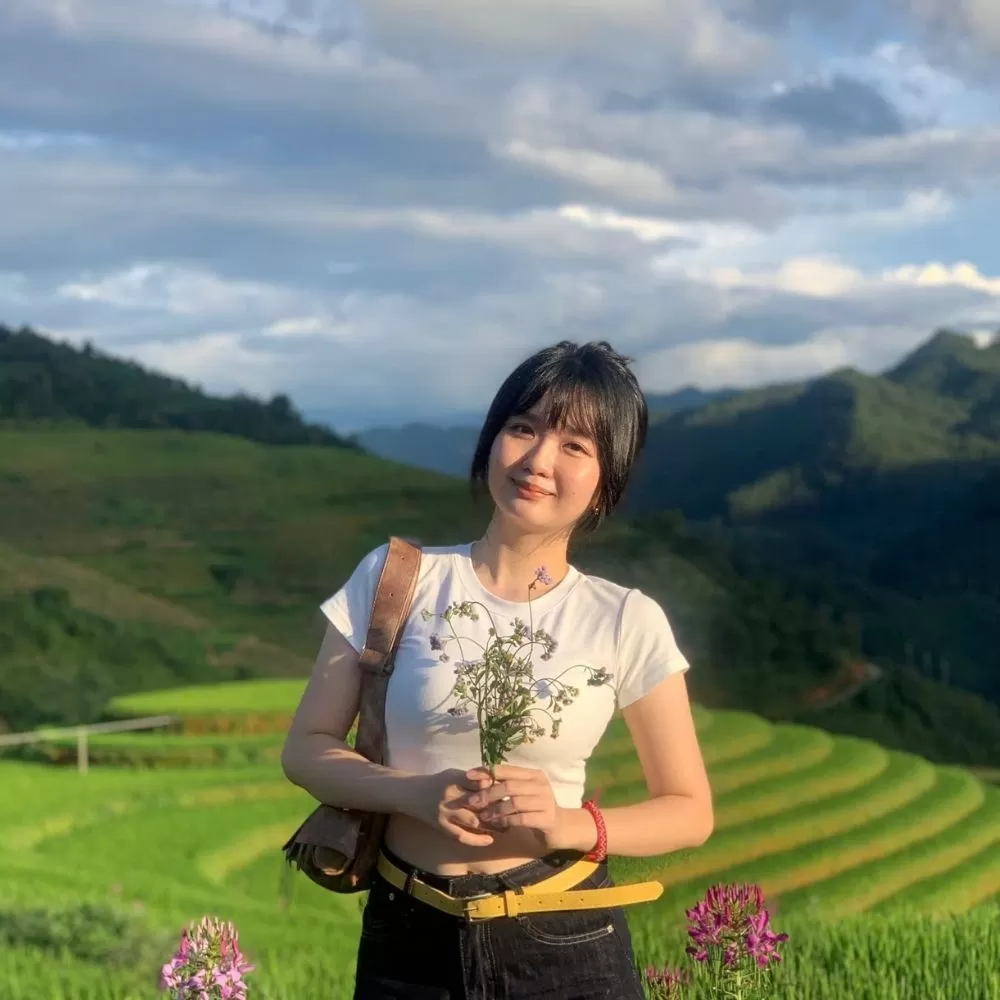






.webp)

